
While I absolutely see the value in a good worksheet, using plural noun activities when you have the time is just so much more fun! What kind of activity would be appropriate for an adult ESL class? Here are four I encourage you to try.
Stage a plural noun linguistic investigation.
Linguistic investigations are one of my favorite activities, especially for grammar. It’s impossible for me to tire of seeing students discover grammar rules on their own. It’s like an Aha! moment on a sugar rush. Now, sometimes a linguistic investigation requires a lot of work on the teacher’s part to create all the parts, especially if original sentences using a particular concept are required.
However, if you are new to linguistic investigations and just want an easy plural noun activity, focus on some common plural noun spelling rules. You’ve got the just add -s, the words that end in -y and need either an -s or an -ies. Then there is end in -es, dropping the -f or -fe and adding -ves, and finally, what to do about words ending in -o? Of course, you could just tell your students the rules, but if you set the stage for them to discover the rules on their own, they are far more likely to remember them. So, here is what you do.
Here’s how to create the parts for this plural noun activity:

- Think up at least five nouns for each of those six plural noun endings, maybe 10 for the just add -s group.
- Open a new Word, PowerPoint, Keynote, OpenOffice, etc. file and create a table that is two columns by four rows and takes up the entire page. That will give you eight cards per page. Why so few? Well, it’s easier to have smaller cards go missing, and you don’t want that. Plus, when you have groups of students using the same cards at the same time, you want to have the words in a fairly large size to make them easier to see.
- Type your nouns in the table, with one noun per cell, or card. Put the singular noun first, and then add its plural form below it. Don’t worry; you’re not giving away the answers because the object of the linguistic investigation is not to come up with the plural forms but to come up with the rules for creating the plural forms.
- Print enough sets of cards to have one set per pair or small group of students. If possible, use a different color for each set. This makes the organization so much easier. Cut apart the cards and put each set in a small plastic bag or a binder clip.
All right, now you have everything you need to set the stage for your linguistic investigation.
Here’s how to run this type of plural noun activity:
- Have students sit together in groups of 2-4. Give each group a set of cards
- Ask students what kind of nouns are at the top and bottom of each card. They will probably be able to recognize that the top has the singular form, and the bottom has the plural form.
- Instruct students to look at the spelling of the singular nouns and how the spelling changes when the nouns become plural.
- Have them look for patterns and create groups of nouns based on the spelling patterns they find.
- Once they have created their plural noun groups, have each group join another group to discuss and share their findings. Encourage them to jot down notes.
So there you have it. An easy-to-make plural nouns activity that will benefit your students and even make you look good if you happen to get a surprise observation. However, if you don’t have the time, energy, or desire to make it, you can grab a pre-made version from my TpT store. You’ll still have to print and cut, but you won’t have to think or deal with design.

Try peer teaching.
Sometimes we don’t have time for a linguistic investigation even when we really want to use that type of activity. Maybe you need to cover more than just the common spelling rules for plural nouns, but you’ve got to get it done in just one class. If so, you probably teach in an IEP (Intensive English Program), and believe me, I know how brutal that pace can be.
You can still do a plural noun activity that requires students to do more of the work and gives them time to speak in English. You can narrow the focus and assign students or groups of students one aspect of plural nouns. Or you can tell them that they will choose their favorite part of the video. Instruct them to pay close attention and take notes because they will be the ones teaching the concept. They will deepen their knowledge and understanding while preparing to teach their classmates. If you give everyone the same links but only assign one per student/group, many of them will likely watch more than just their video simply out of curiosity.
Here are a few videos created by and for adults.
-es Singular + Plural Nouns by Shaw English Online
(9 minutes) January 24, 2014
Speaker: Esther
This video focuses on the add -es rule as compared to just adding -s, but she includes a bit for adding -o. You might decide to tell the student(s) assigned to this video to ignore that part.
SIngular and Plural Nouns by Shaw English Online
(14 minutes) April 30, 2018
Speaker: Fanny
This video gives pronunciation practice, spelling rules, and example sentences where the emphasis is on pronunciation. I love that the words are also transcribed with the International Phonetic Alphabet.
consonant + -y Plurals of Noun by Jimmy McCoy English
(11 minutes) December 28, 2018
Speaker: Jimmy
This video focuses entirely on words that end with consonant + -y, so you might want to pair it with another. If you want lots of examples of nouns with consonant+y presented slowly, this would be perfect.
Irregular Plural Nouns by Shaw English Online
(11½ minutes) May 11, 2018
Speaker: Fanny
She includes pronunciation practice with words transcribed in IPA and concludes the video with listening and repeating sentences with irregular plural nouns.
How to Pronounce Plural Nouns by Extra English Practice
(9 minutes) June 26, 2017
Speakers: Misha & Larissa
They begin with an explanation of the three most common plural noun final sounds /s/, /z/, and /ɪz/, give some examples, and then model a memory game using plural nouns that takes up the majority of the video.
Surprising plurals and singulars by EnglishLessons4U
(16 minutes) April 16, 2020
Speaker: Ronnie
I wouldn’t show this to beginners because Ronnie adds little asides and stories that can be confusing to lower-level students. She definitely lets her personality shine through. Intermediate-level students are more likely to appreciate the extra listening practice. This is about plural and singular, but not only nouns. She includes some subject-verb agreement in this video. She dips into uncountable nouns (because they can’t be plural).
Don’t make this common mistake — Use the S! by EnglishLessons4u
(10 minutes) October 23, 2016
Speaker: Ronnie
This video, like all of Ronnie’s videos, is meant for adult learners. If you or the school where you teach is not comfortable with adults hearing an adult word like “pi**es me off”, either don’t use this video or start after the first 22 seconds. That said, this video covers a lot that is connected to plural nouns, but the main focus is on pronouncing any final /s/ sound on a plural noun. I would absolutely use it.
Play a guessing game.
This game is a bit like the children’s game, I spy with my little eye. This game works best in a room full of various objects, so if you teach in a minimally decorated classroom (my favorite kind), you may wish to bring in objects from your home or borrow from another classroom. To play, describe objects in the room using the quantity, physical descriptors, location, purpose, etc. while students guess what you are thinking of. Be sure not to let your eyes flick to object(s) unless you are purposely doing it to throw them off.
Here’s an example of how that might go.
You: You can open and close these.
Students: Doors!
You: They’re smaller than you are.
Students: Books!
You: They come in different sizes, colors, and shapes.
Students: Eyes!
You: Yes!
After playing a couple of rounds where you are the person who is giving the clues, you can either pair up the students and have them take turns being the clue-giver and the guesser, have them play in small groups, or if your class doesn’t have many students, play with a student clue-giver and everyone else guessing. I personally like to play along as a guesser and make the most idiotic or outlandish guesses, but that’s just me.
Play a linking game!
This is a fun plural noun activity to do that gets students up and moving around. The more space you can provide the better! Of course, if space is limited, you can always create smaller cards that will fit better on a table or desk surface.
Here’s how to create the parts for this plural noun activity.
- Open a new Word, PowerPoint, Keynote, OpenOffice, etc. file and create a table that is two columns by four rows and takes up the entire page if you have the space to really spread out with your students. Increase the number of columns (by two or four) and the rows if you intend to have students play this while sitting at their desks/tables.
- Type your plural nouns in the first column, with one noun per cell, or card. In the second column, paste an image that represents the plural noun (if you also want to focus on vocabulary) or the singular noun (if grammar is your only focus). If you are using images that you intend to print in color, make the borders thicker and change the border color for each set of cards. That makes it easier to keep the sets from getting mixed up.
- Print enough sets of the cards to have one set per pair or small group of students. If you’re not printing in color, use a different color of paper for each set. This makes organization so much easier. Cut out the cards, but do NOT cut apart the plural noun from its image/singular form. You should have long cards. Put each set in a small plastic bag or a binder clip.
- Get tape. I generally tear off and hand small pieces to students as they need them because otherwise, you run out very quickly. Some really like to use a lot of tape!
- Have some kind of small prize. Adults like prizes, and some will use the prize as an excuse to really get into the spirit.
All right, now you have everything you need for students to play this game.
Here’s how to run this type of plural noun activity.
Whole Class (for small classes only)
- Pass out an equal number of cards to each student. Be sure to use a large size for your cards. Call for a student (or two at a time to make it go a little faster and be a little more challenging) to come forward and tape a card to the board/wall. The first person can tape their card anywhere.
- Tell students to look at their cards and see if they have a card that can be played. They must match the image to the word or the singular noun to the plural noun. They can create a long line or turn the card so that it is perpendicular to the card it is matching.
- The game continues until all cards have been played or until no more cards can be played. If all cards get played, the whole class wins. If there are cards left, whoever has the fewest cards is the winner.
- Award prizes.
Small Groups (for large classes)
- Pass out sets of cards to each small group. Have students play rock-paper-scissors to see who will go first. The first person can put down any card they want.
- Then the other students must look at their cards to see if they have a card that can be played. They must match the image to the word or the singular noun to the plural noun. They can create long lines or turn the card so that it is perpendicular to the card it is matching.
- The game continues until all cards have been played or until no more cards can be played. If all cards get played, everyone in the group wins. If there are cards left, whoever has the fewest cards is the winner.
- Award prizes.
A final tip
You don’t necessarily have to do an entire unit on plural nouns if you’ve been diligently sneaking them into your vocabulary themes. For example, when you are teaching a unit on body parts, have them learn the singular and plural forms for each body part (as applicable). Clothing gives you the chance to explain why the noun jeans always has -s and gets counted by saying a pair of jeans, two pairs of jeans. That unit on animal vocabulary is the perfect time to introduce plural nouns that don’t change at all, such as sheep, fish, deer, and moose.
Read more about teaching grammar in adult ESL!
If you loved learning about these plural noun activities, you might like to read the following:
- Time Clauses: This is How to Make Them Fun
- 7 FUN Activities for Opposite Adjectives
- Guide them into Understanding Coordinating Conjunctions
- 3 Fun Comparative Adjective Speaking Activities
How about some BOOM decks?
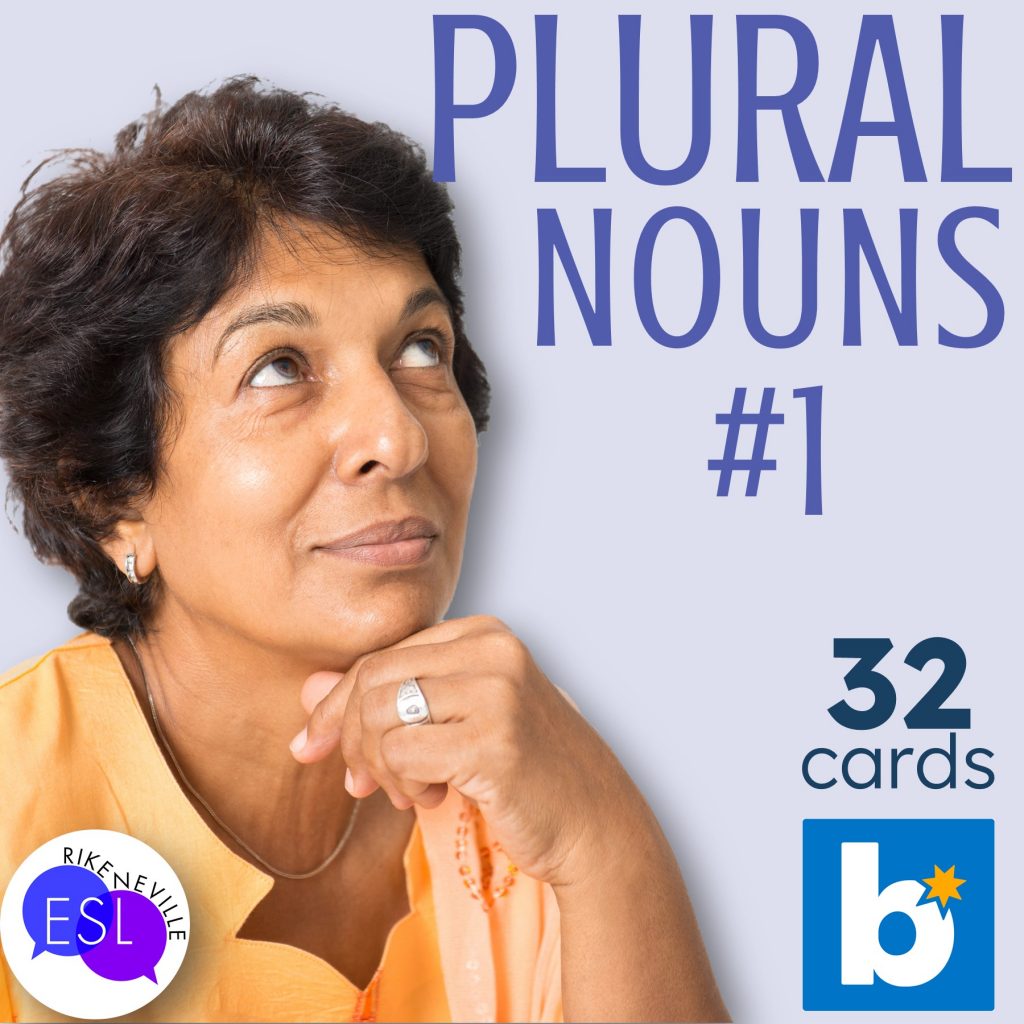
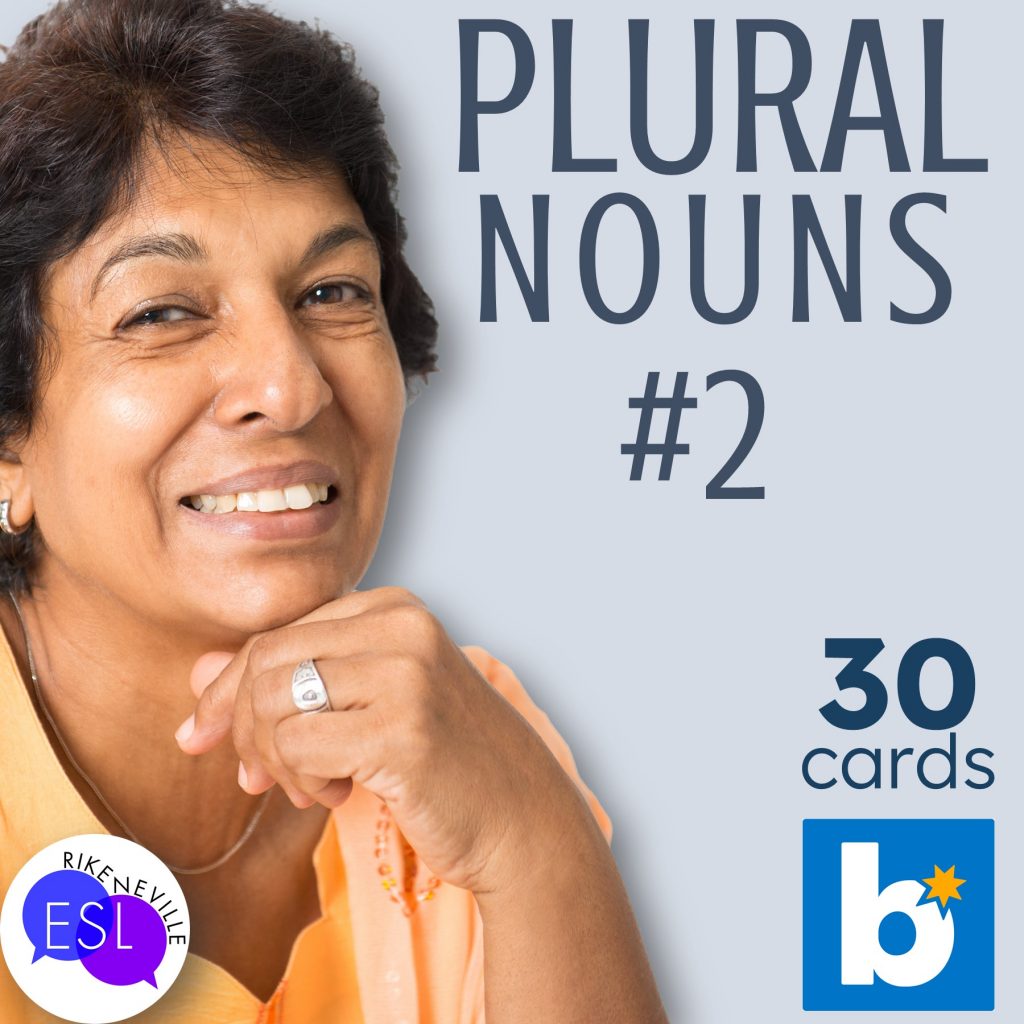
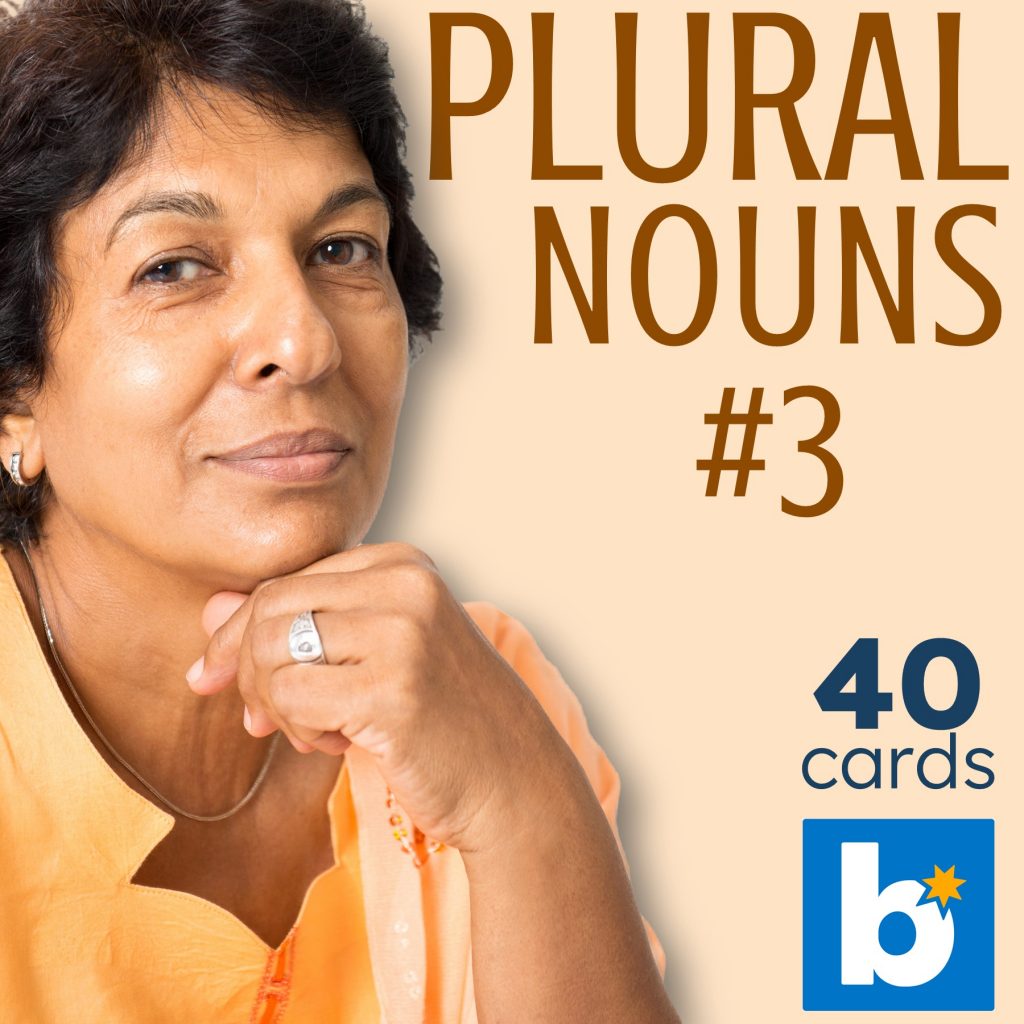

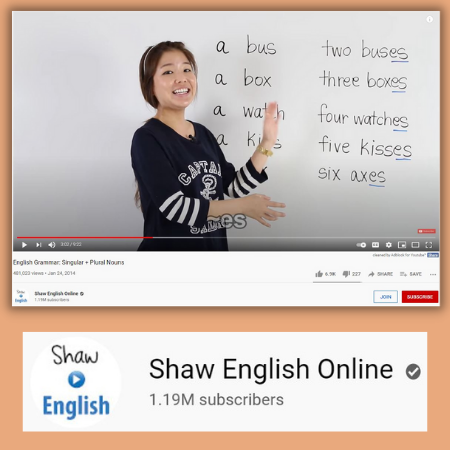
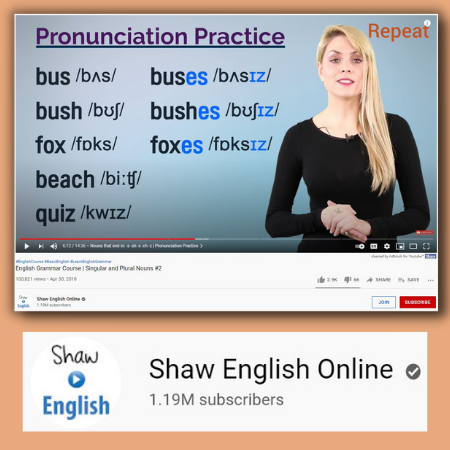
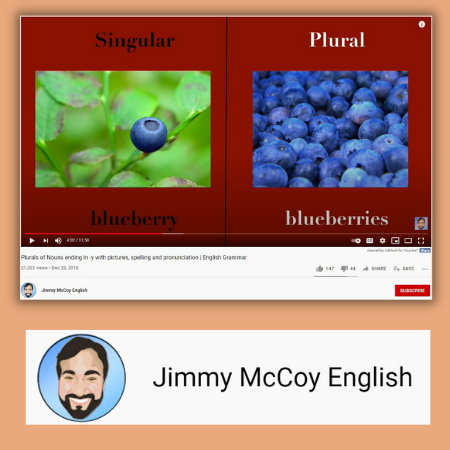
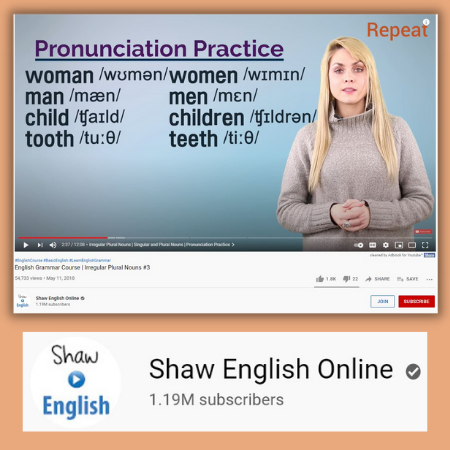
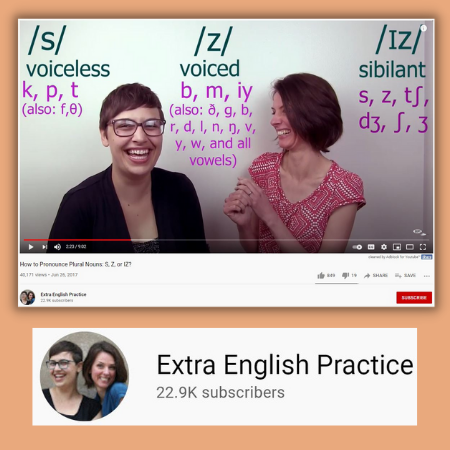
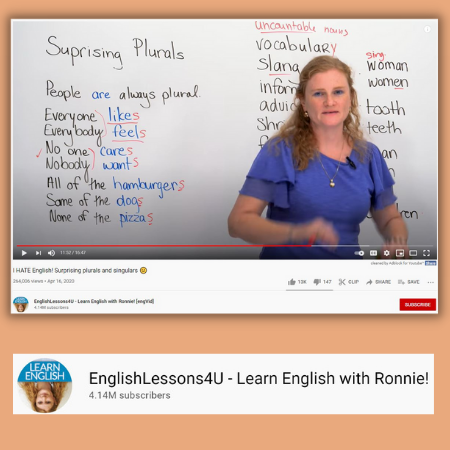
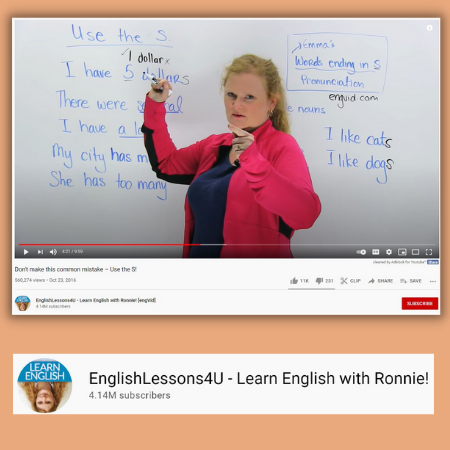
Leave a Reply